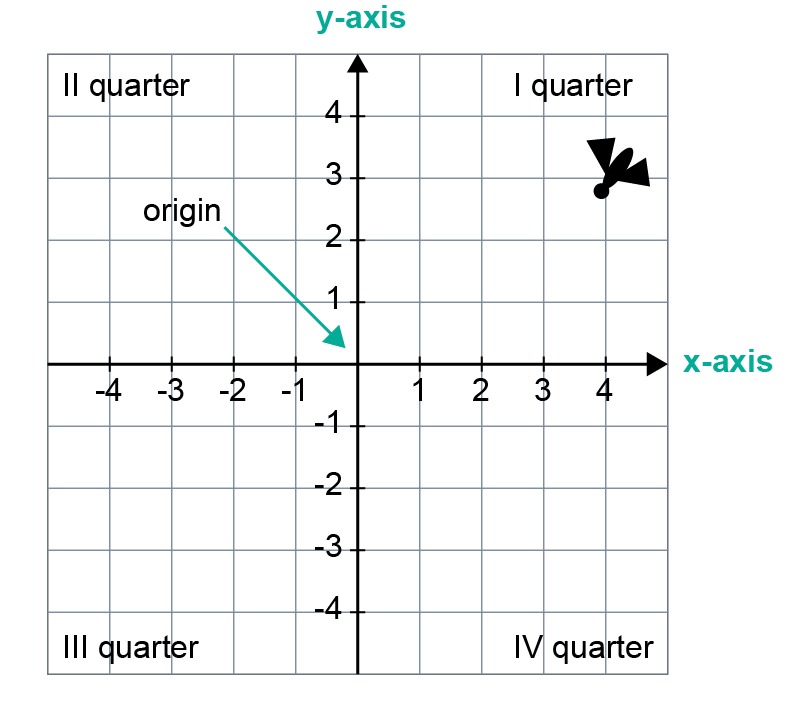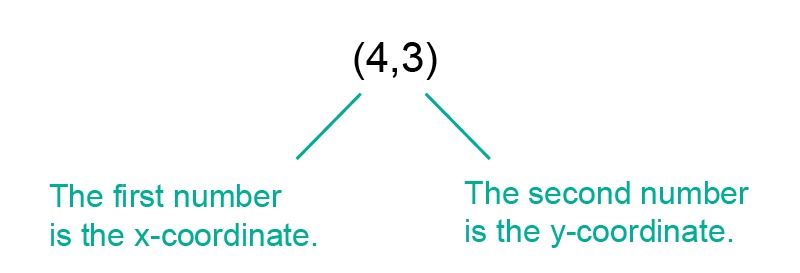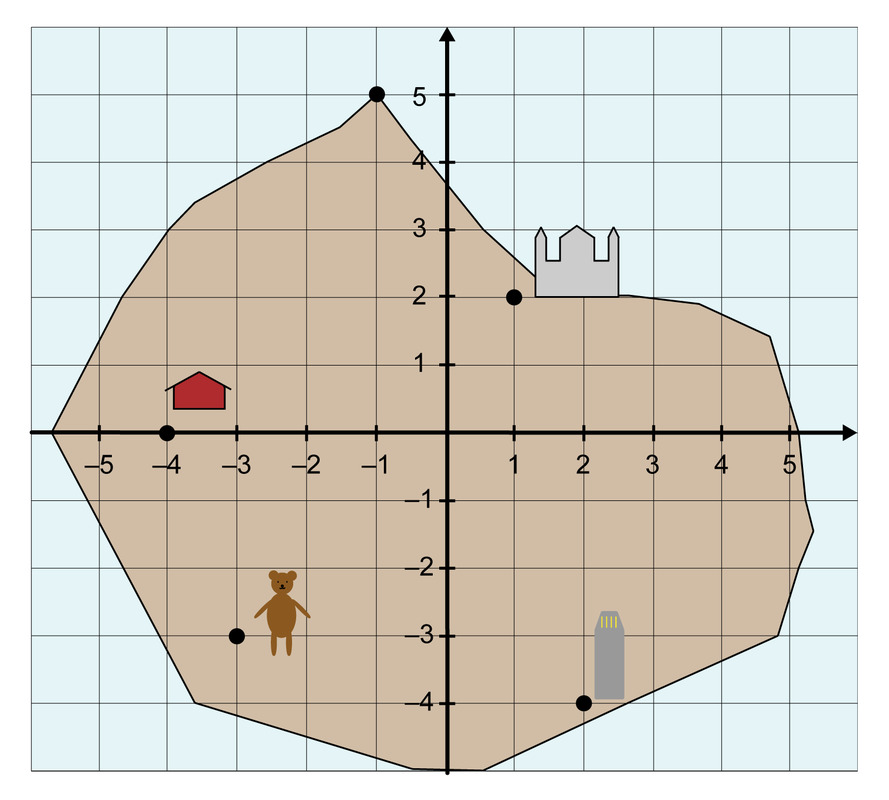1. The coordinate system
Exercises
The basics of the coordinate system
The 17th-century mathematician René Descartes is considered to be the inventor of the coordinate system. One night he was lying in his bed and watched a fly sitting on the ceiling. Descartes began to wonder how he could report the location of the fly. To solve the problem, Descartes invented the coordinate system.

Each point in the coordinate system has its own coordinates. The coordinates indicate the point's location inside the coordinate system. The coordinates are marked as two numbers inside brackets: [[$ ( x, y ) $]]. The order of the [[$ x $]] and [[$ y $]] coordinates in this marking is important, which is why coordinates are sometimes called ordered pairs. For example, the location of a fly in the coordinate system above is indicated as follows:

The coordinate axes divide the coordinate system into four quarters. For the points in the first quarter, both coordinates are positive. What are the signs of the coordinates in the other quarters?
